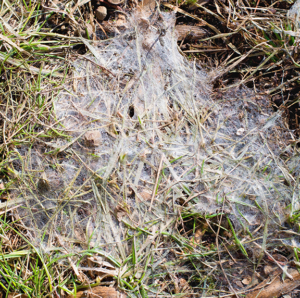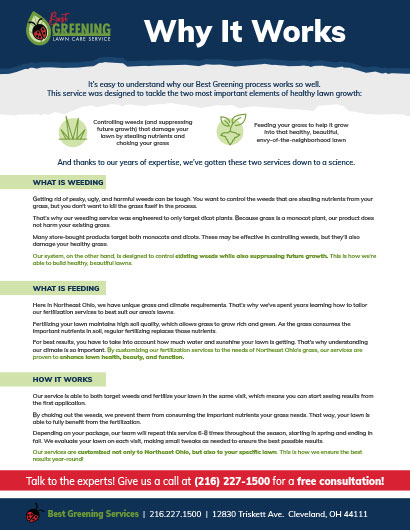5 Best Ways to Get Rid of Snow Mold
By Rick Pietrick
 So, the snow has melted and your lawn has been revealed. What was once a beautiful dark green lawn now contains white and yellowish spots. What happened to your lawn this winter? Is it dead? It looks terrible!
So, the snow has melted and your lawn has been revealed. What was once a beautiful dark green lawn now contains white and yellowish spots. What happened to your lawn this winter? Is it dead? It looks terrible!
Don’t worry.
The lawn is not dying. It is affected by the presence of a lawn fungus commonly known as snow mold.
Snow mold is often seen as circular patches of “dead” and matted grass blades with a web like white or pinkish mold. Most often the webbing is not present and what remains is a dry/slimy brown spot.
The disease becomes apparent as snow melts, exposing the grass to the cool, wet temperatures of early spring. Keep in mind, snow is not always necessary for the disease to occur. Most instances of snow mold only affect the grass blade, so full recovery of the turf plant is common.
What are the best ways to prevent and get rid of snow mold?
An ounce of prevention is worth a pound of cure
This old adage holds true for lawn care too. One of the best ways to prevent a snow mold situation is by taking care of your turf grass in the late summer months. This means applying fall fertilizer at the proper time and maintaining a healthy length when mowing. Before winter, the lawn should be cut at no more than 3” and no less than 2” tall. Staying within these guidelines will keep your turf plant strong and healthy going into winter.
Good housekeeping
The goal is to have a nice-looking yard in spring, right? To achieve this, make sure all the fall leaves and debris from trees are raked and picked up before snowfall. Snow mold growth is greatest underneath covers that hold moisture. Leaving patches of wet leaves in the lawn will almost ensure disease come spring. So, before closing up shop for winter, make one last sweep to check the lawn for leaves and debris.
Snow piles and mountains
Plow trucks and shoveling are a familiar experience for Clevelanders during winter. We clear our driveways and sidewalks after snowfall so we can have access to our homes without bringing all the snow inside. After a heavy snow fall, sometimes the plow and shovel piles will get quite high. As the snow in the rest of the lawn melts with spring, these areas where the snow has been piled can take weeks longer to get access to sunlight. The longer the areas remain covered the better chance they have of developing snow mold issues. Best practice is not to pile large amounts of snow in one area if you can help it.
Recovery
The lawn has dried and there is presence of snow mold. It’s okay. The snow mold fungus, for the most part, is only a cosmetic issue. With regular fertilizing and proper mowing, the disease should go away on its own in a few weeks. Remember, the disease is only affecting the grass blade at this point. Fertilizing will help it push new growth and “outgrow” the disease. Think of it like getting a nick on your fingernail. The nail will wear the sign of the nick until it grows long enough and is cut off. There are a few things you can do to expedite the recovery process. Take a gentle rake to the affected areas. Be careful not to tear out all the grass. Remove the excess “brown” grass into a dust bin or yard waste bag. Raking the loose grass out with allow air to circulate the affected area and fluff up the recovering turf grass.
If you must . . . we can spray
Fungicide applications for snow mold are not recommended for home lawns except in extreme circumstances. The cultural practices described above are the most effective means of reducing snow mold damage. In most cases, the grass will resume healthy growth in the spring, but when the previous methods fail, a professional lawn disease application may be necessary to stop the disease. Best Greening Services does offer a snow mold application as part of our TURF RX services but it is only advised when the previous cultural methods have failed.



